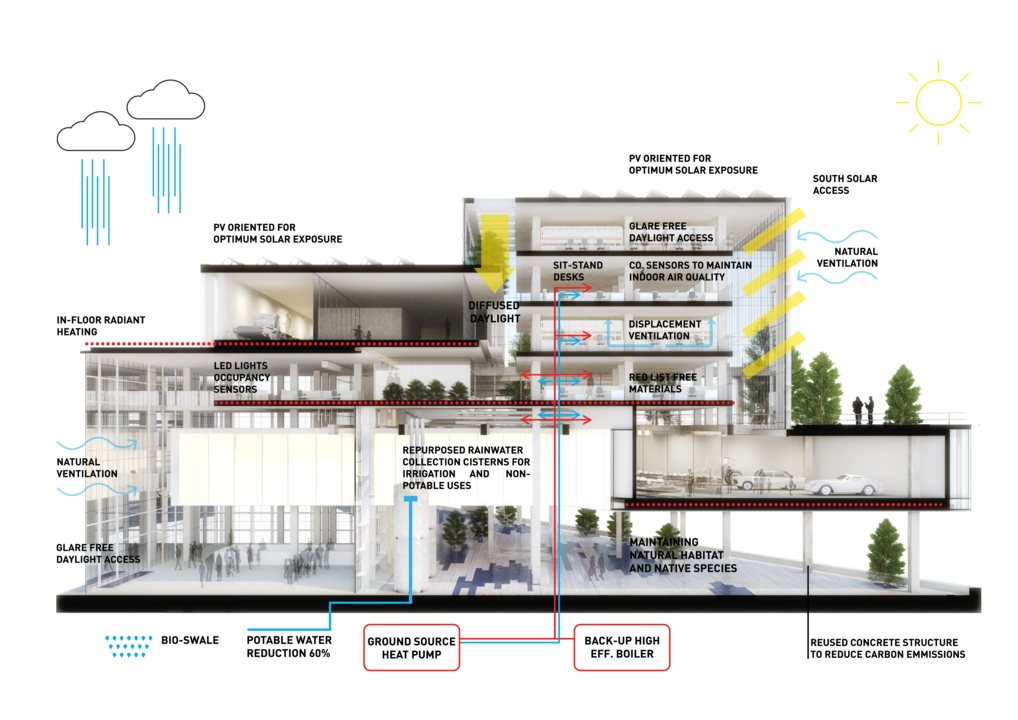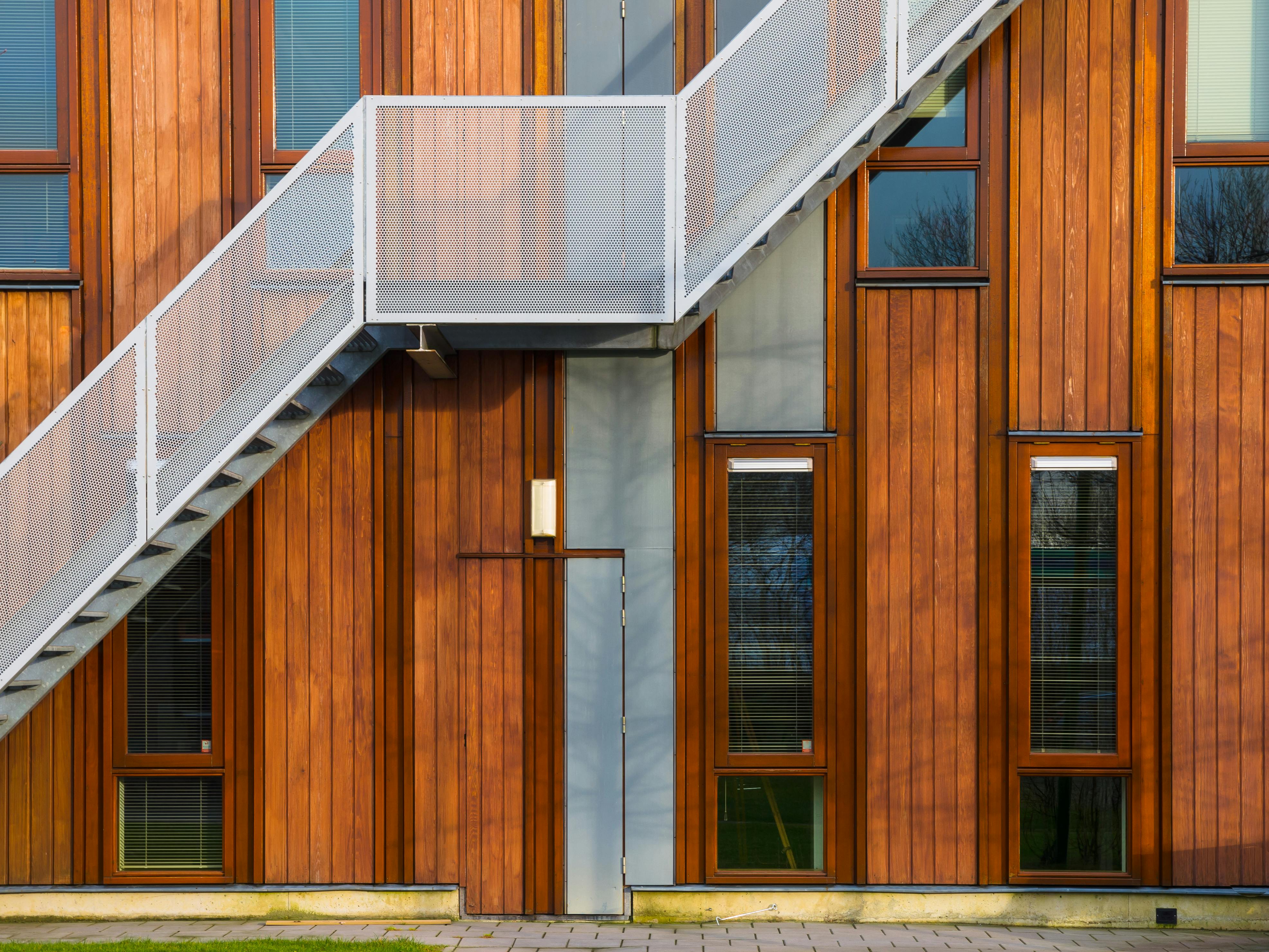Table Of Contents
Table Of Contents
Sustainable construction is a holistic approach to building design that prioritizes environmental responsibility, social equity, and economic viability.
It encompasses a wide range of practices, from energy-efficient building design and renewable energy integration to sustainable materials selection and waste reduction.
By embracing sustainable construction principles, we can create buildings that are not only energy-efficient and environmentally friendly but also promote the health, well-being, and productivity of their occupants.
What is Sustainable Construction?
At its essence, sustainable construction embodies a departure from traditional paradigms—a departure that necessitates a fundamental shift in mindset and approach. It is not merely about erecting structures, but about weaving a tapestry of resilience, innovation, and empathy into the fabric of our built environment. Sustainable construction calls upon us to challenge the status quo, interrogate every decision, and aspire to coexist harmoniously with the natural world.
Central to sustainable construction are principles that transcend the boundaries of time and space—principles that prioritize resource efficiency, environmental responsibility, and social equity. These principles compel us to rethink our relationship with materials, energy, and waste, urging us to seek solutions that are not only technologically advanced but ethically sound.

Key Sustainable Construction Practices
As we navigate the landscape of sustainable construction, we encounter a rich tapestry of practices poised to revolutionize the AEC industry. From harnessing the power of renewable energy to reimagining waste as a valuable resource, these practices offer a roadmap to a more sustainable future.
Renewable and Recyclable Materials
One such practice is the use of renewable and recyclable materials—a departure from the extractive practices that have long defined the construction industry. From sustainably sourced timber to recycled steel, these materials offer a glimpse into a future where construction is synonymous with regeneration rather than depletion.
Energy-Efficient Building Design and Construction Techniques
Another key practice is energy-efficient building design and construction techniques. In a world grappling with the consequences of climate change, energy efficiency emerges as a critical tool in our arsenal. Passive design strategies, advanced insulation materials, and integrated renewable energy systems all play a role in minimizing energy consumption and mitigating our carbon footprint.
Water Conservation Strategies
Water conservation strategies also occupy a prominent place in the toolkit of sustainable construction. With water scarcity emerging as a pressing global issue, we must design buildings and infrastructure that minimize water consumption and promote responsible water management. Rainwater harvesting systems, greywater recycling, and water-efficient landscaping are just a few examples of the innovative solutions available to address this challenge.
Reducing Construction Waste
Reducing construction waste through efficient materials management is integral to sustainable construction. The construction industry is notorious for its wasteful practices, with millions of tons of materials ending up in landfills each year. By adopting lean construction principles, embracing prefabrication, and prioritizing material reuse and recycling, we can significantly reduce the environmental impact of construction activities.
Sustainable Construction Challenges
Despite the promise of sustainable construction, obstacles abound—economic, social, and regulatory barriers threaten to derail our progress at every turn. Yet, in the face of adversity, there is opportunity—a chance to challenge the status quo, disrupt entrenched norms, and forge a new path forward.
Economic Barriers and the Perception of Higher Costs
Economic barriers, for example, remain a significant challenge for many developers, contractors, and building owners. The perceived cost premium associated with sustainable construction can deter investment in green building practices, despite evidence suggesting that the long-term benefits far outweigh the upfront costs. Overcoming this barrier requires a fundamental shift in mindset, recognizing that sustainability is not just a moral imperative but also a sound business decision.
Lack of Awareness and Education Among Stakeholders
Lack of awareness and education among stakeholders is another obstacle to the widespread adoption of sustainable construction practices. Many architects, engineers, contractors, and clients lack the knowledge and expertise needed to integrate sustainability into their projects effectively. Addressing this challenge requires a concerted effort to provide industry professionals with training, resources, and support, empowering them to embrace sustainability as a core value.
Regulatory Challenges and the Need for Supportive Policies
Regulatory challenges also pose significant barriers to sustainable construction. Inconsistent regulations, ambiguous standards, and a lack of supportive policies create uncertainty and complexity for sustainable construction projects, making it difficult for stakeholders to navigate the regulatory landscape effectively. To overcome these challenges, policymakers must collaborate with industry stakeholders to develop clear, consistent, and enforceable regulations that incentivize sustainable construction practices.
Why is Sustainable Building Important?
Within the visionary scope of sustainable construction, the General Services Administration (GSA)'s sustainable design principles stand as a cornerstone for transforming the federal landscape into a model of efficiency, resilience, and environmental stewardship. These principles are meticulously crafted to elevate the standard of federal buildings and projects, ensuring they not only meet but exceed the expectations of sustainability and operational performance. The GSA's approach is underpinned by the ambition to reduce the environmental footprint of federal buildings, enhance their resilience to climate change, and promote the health and well-being of their occupants.
The sustainable design principles focus on several critical areas: energy efficiency, water conservation, reduction of greenhouse gas emissions, and the utilization of renewable energy sources.
By embedding these principles into the fabric of federal construction and renovation projects, the GSA aims to lead by example, showcasing how integrated, sustainable design can achieve remarkable improvements in building performance and environmental impact. These principles are not just guidelines but a call to action for innovation, challenging architects, engineers, and builders to push the boundaries of what is possible in sustainable construction.
Per its guidelines, the GSA mandates that federal buildings achieve energy efficiency at least 30% better than ASHRAE 90.1 standards, as per the 2005 Energy Policy Act. Federal projects must adhere to the 2020 Guiding Principles for Sustainable Federal Buildings, aiming for optimized building performance and lifecycle value, with annual progress towards full portfolio compliance.
The Sustainable Design Checklist helps monitor adherence to these principles, covering integrated design, energy, water, indoor quality, materials, and resilience. The Energy Independence and Security Act of 2007 and Executive Order 14057 set ambitious goals for reducing fossil fuel energy consumption, managing water sustainably, applying sustainable design principles, reducing greenhouse gas emissions, using carbon pollution-free electricity, and achieving net-zero operational emissions in new constructions by 2030.
Moreover, the GSA's principles extend beyond environmental considerations to encompass social and economic dimensions, recognizing that sustainable design plays a pivotal role in creating equitable, accessible, and vibrant public spaces.
Through its commitment to these principles, the GSA aspires to do more than construct buildings; it seeks to foster inclusive, healthy, and resilient communities. By prioritizing sustainability in its projects, the GSA is paving the way for a future where federal infrastructure contributes positively to our planet and its people, demonstrating the profound impact that thoughtful, sustainable design can have on our world.

How to Achieve Sustainable Construction
Sustainable construction is a multifaceted endeavor that extends beyond the mere application of eco-friendly materials or energy-efficient technologies. It requires a deep understanding of the interconnectedness between various elements of the built environment and the broader ecological systems within which they operate. Moreover, it demands a nuanced approach that considers not only environmental factors but also social and economic dimensions.
One crucial aspect of sustainable construction often overlooked is the concept of biophilia—the innate human tendency to seek connection with nature. Integrating biophilic design principles into construction projects can have profound effects on occupant health, well-being, and productivity. By incorporating elements such as natural light, greenery, and views of nature into building design, we can create spaces that foster a sense of harmony and balance, promoting mental and physical wellness.
Furthermore, sustainable construction presents an opportunity to address social equity and community resilience. In many urban areas, marginalized communities bear the brunt of environmental degradation and lack access to quality housing and amenities. Sustainable construction projects that prioritize affordable housing, equitable access to green spaces, and community-driven development initiatives can help bridge these disparities, creating more inclusive and resilient communities.
Moreover, sustainable construction has the potential to drive economic growth and innovation. As the demand for green buildings continues to rise, there is a growing market for sustainable construction materials, technologies, and services. By investing in research and development and fostering collaboration between industry stakeholders, we can unlock new opportunities for job creation, entrepreneurship, and economic development.
However, realizing the full potential of sustainable construction requires a collective effort from all stakeholders involved. Architects, engineers, contractors, developers, policymakers, and community members must come together to share knowledge, exchange best practices, and collaborate on solutions that prioritize sustainability and resilience.
In this regard, initiatives such as green building certification programs, public-private partnerships, and community engagement campaigns play a crucial role in driving progress towards sustainable construction goals. By providing incentives for green building practices, establishing regulatory frameworks that support sustainability, and raising awareness among the public, these initiatives can catalyze positive change and foster a culture of sustainability within the construction industry.
cove.tool’s Solution: A Catalyst Sustainable Construction
In addressing these challenges, cove.tool emerges as a transformative solution, offering a comprehensive platform that empowers stakeholders to overcome barriers and implement sustainable construction practices effectively. With its suite of tools and features, cove.tool addresses key challenges through the following:
Economic Barriers and the Perception of Higher Costs: cove.tool provides in-depth cost analysis and optimization tools that enable stakeholders to identify cost-effective sustainable design strategies and materials, debunking the myth of higher costs associated with sustainability.
Lack of Awareness and Education Among Stakeholders: Through on-demand reports and educational resources, cove.tool equips stakeholders with the knowledge and insights needed to make informed decisions and advocate for sustainable construction practices.
Regulatory Challenges and the Need for Supportive Policies:
Leveraging its vast database and analytical capabilities, cove.tool ensures compliance with regulations, standards, and policies, guiding stakeholders through complex regulatory landscapes and facilitating seamless project delivery.
The benefits of utilizing cove.tool in sustainable construction projects are manifold, including streamlined processes, improved efficiency, enhanced decision-making, and compliance with environmental standards. By catalyzing sustainable innovation, cove.tool accelerates the transition from theory to practice, driving positive environmental and social outcomes in the built environment.

Building the Future Through Sustainable Design Principles
One thing is abundantly clear: the future of our planet rests in our hands. Will we continue down the path of least resistance, perpetuating the cycle of environmental degradation and social inequality? Or will we rise to the challenge, harnessing the power of innovation and collaboration to build a world that is not only sustainable but thriving? The choice is ours to make—but let us choose wisely, for the stakes have never been higher.
As we reflect on the complexities and opportunities inherent in sustainable construction, it becomes evident that the journey towards a more sustainable built environment is both challenging and rewarding. It requires us to embrace innovation, collaboration, and a willingness to challenge conventional wisdom. It demands that we confront the systemic inequalities and environmental injustices that plague our communities. And it invites us to envision a future where buildings not only serve as shelters but as beacons of hope—a tangible expression of our commitment to the planet and future generations.
As we navigate this journey, let us remain steadfast in our determination to build a world that is not only sustainable but also equitable, resilient, and prosperous. Let us harness the power of sustainable construction to create spaces that inspire, uplift, and enrich the lives of all who inhabit them. And let us seize this moment as an opportunity to redefine our relationship with the built environment and chart a course toward a brighter, more sustainable future for all.
